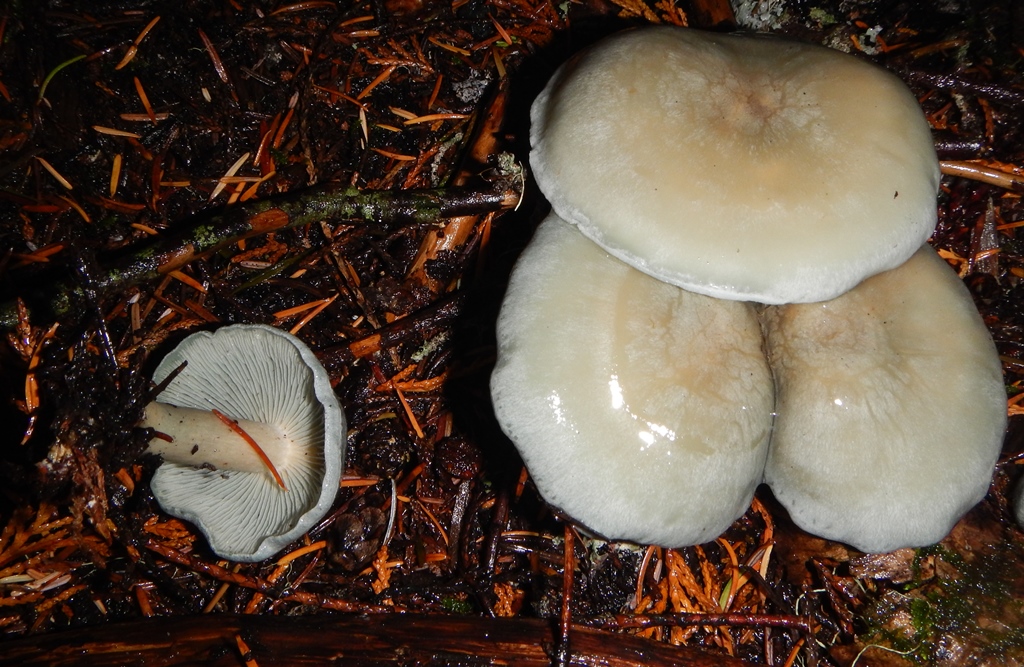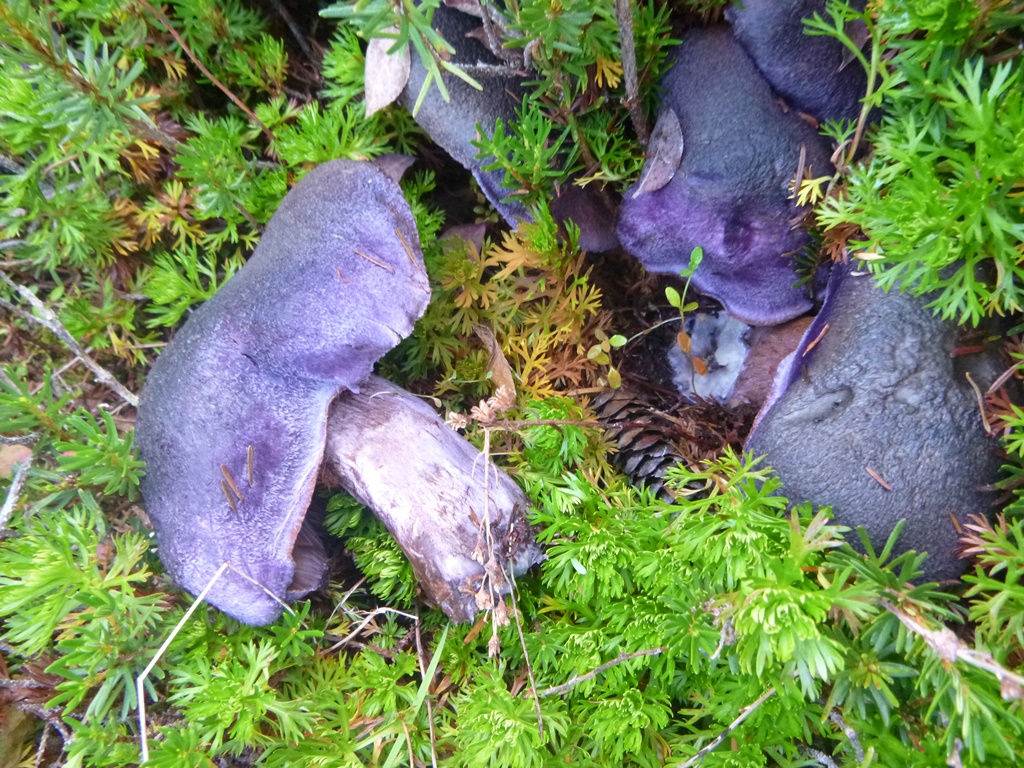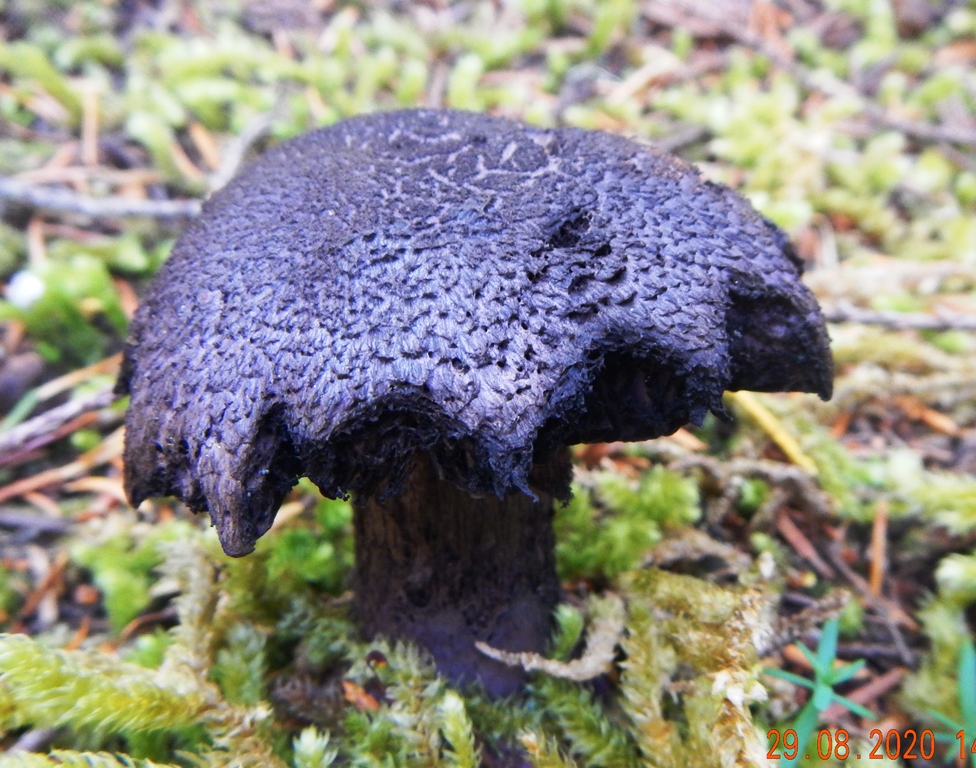Note by Alison M. to the Botany Group, distributed by Jocie on October 20.
Notes on shades of green, blue and purple in gilled mushrooms
Still in the category of gilled shrooms, shades of greens and blues are not commonly found in the world of fungi and are often fast fading. [Click a photo to enlarge it.]
A couple of examples have appeared in the past month, one up in Paradise Meadows: Clitocybe odora var. pacifica – blue-green anise clitocybe (photo #1) and the other down in the valley on Tsolum River Road: Stropharia aeruginosa – no common name (#2–#4). The former, as its name suggests, is recognisable by its anise-like odour as well as by the blue-green tinge. This Stropharia ends up looking very much like the common Stropharia ambigua with a yellowish cap, as well as the distinctive cottony remnants of its veil around the rim of the cap and on the stipe, and its purple/charcoal spore. It is only in the semi-opened shroom that the blue-green is visible.
Another green-capped fungus is the elusive Hygrocybe psittacina – parrot mushroom (#5), which I have found once in the past 10 years, near the confluence of the Browns and Puntledge Rivers. It lost its brilliant green within a day.
Deeper blues include Arrhenia chlorocyanea (#6 ) from Kin Beach a few years ago, and Polyozellus multiplex – blue chanterelle (#7), which we found in late June on the Elk River Trail. It can be closer to black than blue, depending on age.
Popping up at the moment on the purple end of the spectrum is Laccaria amethysto-occidentalis (#8), which appears without fail on the edge of our field.
There are many members of the genus Cortinarius that have lilac or purple caps, or lilac stipe and gills with a beige cap (#9 & #10), the latter showing the typical cortina or cobweb-like remnants of the veil, from which the genus gets its name, and the typical cinnamon brown of the spores.
Finally the deep purple Cortinarius violaceus – violet cort, stands out stunningly against the green leaves of the Luetkea pectinata – partridgefoot (#11 and #12). And #12 shows the artistic endeavours of a red squirrel.
All these examples come from the subalpine.












